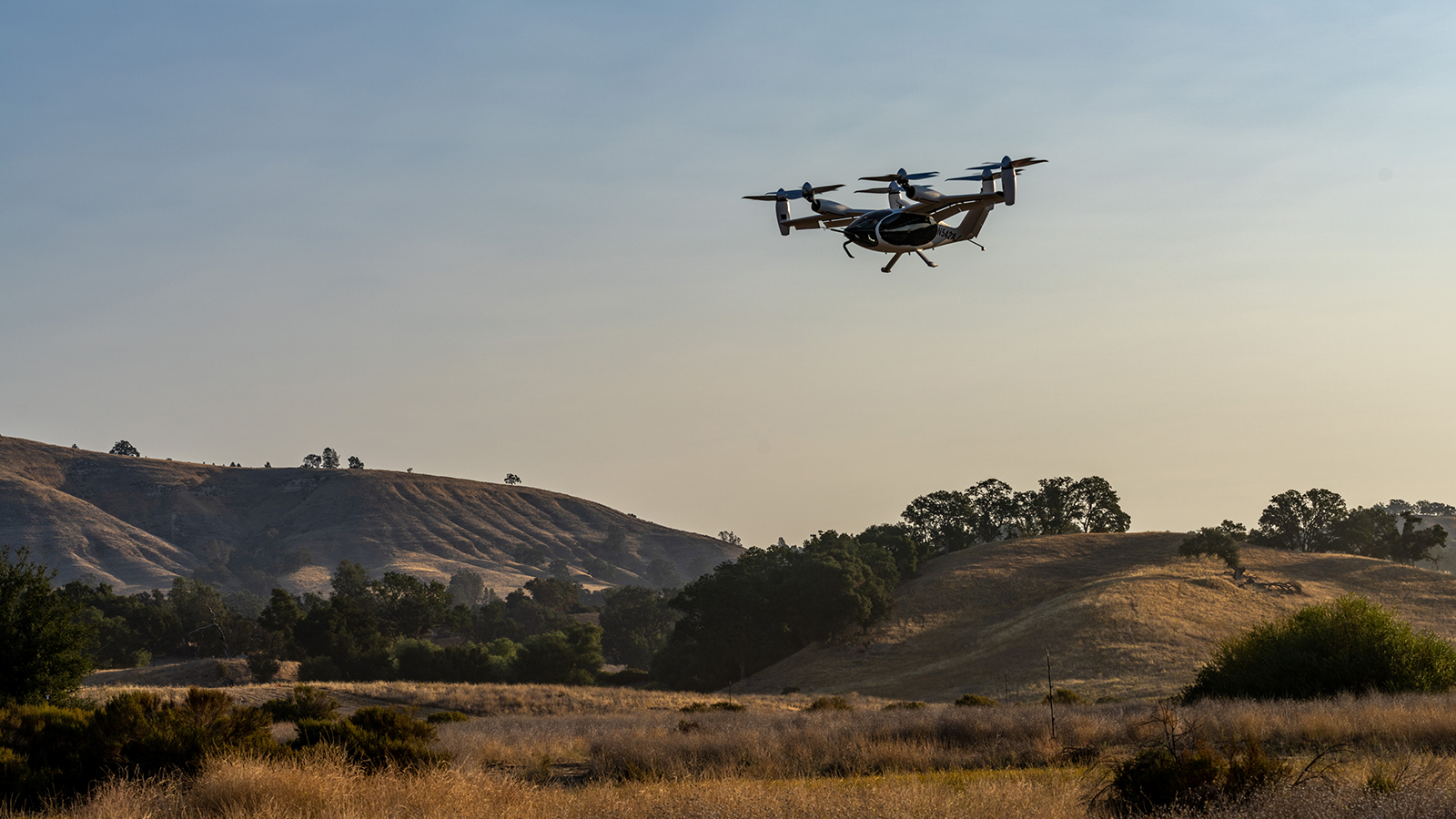Stay Up to Date
Submit your email address to receive the latest industry and Aerospace America news.
NASA plans noise testing with Wisk Aero next; specifics of Joby tests to be published in the coming months
Joby Aviation’s noise tests with NASA in August and September demonstrated that the company’s prototype electric passenger aircraft, the S4, met the company’s own sound level standards, Joby said today in a news release.
When Joby flew the rotorcraft at its test range in California, noise levels measured 65 A-weighted decibels (dBA), at a distance of 100 meters from the aircraft as it took off and landed. Joby said that sound level, expressed in a special kind of decibel weighted for the human ear’s frequency response, is comparable to two people conversing. The Hearing Health Foundation in New York City describes 60 dBA as “background music” and 70 dBA as “average office noise,” presumably pre-pandemic.
NASA microphones registered 45.2 dBA on the ground when the aircraft flew at 500 meters altitude at 185 kph. Joby said it believes that sound level “will barely be perceptible” in cities.
Joby praised the test results as evidence that its eVTOL (electric vertical takeoff and landing) aircraft could be flown regularly in cities without disturbing residents.
“With an aircraft this quiet, we have the opportunity to completely rethink how we live and travel today, helping to make flight an everyday reality in and around cities. It’s a game-changer,” the release quoted founder and CEO JoeBen Bevirt as saying.
In a separate news release today, NASA didn’t characterize the test results but said the data gathered will help to advance modeling and understanding of potential air taxi use.
NASA plans further testing with advanced air mobility (AAM) companies, including California-based Wisk Aero later this year.
“We will use this data to help us understand the vehicle’s performance characteristics, the acoustics profiles, as well as information that will help us develop modeling scenarios,” Shivanjli Sharma, NASA’s acting lead for the AAM National Campaign, said in NASA’s release.
Both Joby and NASA plan to release further details in technical papers to be presented at industry conferences later this year, NASA said.
NASA researchers spent two weeks measuring the sound of Joby’s aircraft at the company’s Electric Flight Base near Big Sur, California. The agency deployed 50 microphones in a field, known as the Mobile Acoustics Facility, to capture an acoustic footprint during hovering, takeoff, cruising, and landing.
NASA and FAA have done community studies that show high concern among the public about the noise from rotorcraft. NASA’s testing program is designed to provide data to FAA as FAA rolls out regulation of the AAM industry. Tests will help the agencies establish publicly acceptable flight paths and thresholds for aircraft certification, among other things.
Joby says its piloted five-seat eVTOL aircraft will carry four passengers at speeds of up to 200 mph (321 kph), with a maximum range of 150 miles (241 km) on a single charge and zero operating emissions. But so far the company has only flown unpiloted tests.
Joby is targeting 2024 for operational service of its aircraft.
About paul brinkmann
Paul covers advanced air mobility, space launches and more for our website and the quarterly magazine. Paul joined us in 2022 and is based near Kennedy Space Center in Florida. He previously covered aerospace for United Press International and the Orlando Sentinel.
Related Posts
Stay Up to Date
Submit your email address to receive the latest industry and Aerospace America news.




